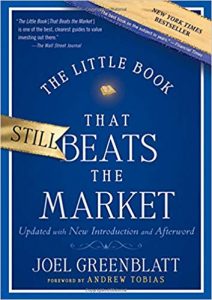Contents
When this occurs, a market order to sell is executed at the next available price and your position will be closed out at the next available price. For example, let’s say a trader has purchased a stock at $20 per share and placed a stop-loss order at $18 a share, and that the stock closes on one trading day at $21 a share. Then, after the close of trading for the day, catastrophic news about the company comes out. For example, a trader may buy a stock and place a stop-loss order with a stop 10% below the stock’s purchase price.
Stocks are a tricky business, especially when the market is volatile. When you have money in an investment, you want to be sure it is benefiting you. Falling stock prices means you could lose money on your investments, which is something all investors want to evidence based technical analysis avoid. Get protection against catastrophic costs related to your self-funded medical plan. Stop Loss solutions help your company focus on what matters — taking care of your employees and helping them work happier and healthier — instead of worrying about risk.
Plan administrators
These studies all showed the success of a stop-loss strategy over long periods of time, this of course does not mean that a buy and hold strategy will not sometimes outperform your stop-loss strategy. The difficult part is to not let your emotion keep you from selling when a stop-loss level is reached. The stop-loss momentum strategy also completely avoided the crash risks of the original momentum strategy as the following table clearly shows. It also increased the Sharpe ratio of the stop-loss momentum strategy to 0.371, more than double the level of the original momentum strategy of 0.166. This is a short test period but it included the bursting of the internet and the financial crisis.

Investors generally use a sell stop order in an attempt to limit a loss or to protect a profit on a stock that they own. Stop-loss vs. stop-limit orders are both used to provide protection against the size of potential losses on existing positions. Stop prices usually represent the maximum loss level an investor is willing to accept for a given position. Stop-loss orders guarantee execution if the security hits the stop price, but do not guarantee what price the trade will be exited at. Stop Limits effectively build a limit price requirement atop a normal stop-loss order. Brokerages execute a variety of stock order types for investors to buy and sell stocks.
Another restriction with the stop-loss order is that many brokers do not allow you to place a stop order on certain securities like OTC Bulletin Board stocks or penny stocks. Stop-loss orders also help insulate your decision-making from emotional influences. For example, they may maintain the false belief that if they give a stock another chance, it will come around. Additionally, when it comes to stop-loss orders, you don’t have to monitor how a stock is performing daily. This convenience is especially handy when you are on vacation or in a situation that prevents you from watching your stocks for an extended period.
Motley Fool Investing Philosophy
In this case, sometimes axi broker review orders are referred to as a “trailing stop.” Here, the stop-loss order is set at a percentage level below the current market price . The price of the stop-loss adjusts as the stock price fluctuates. It’s important to keep in mind that if a stock goes up, you have an unrealized gain; you don’t have the cash in hand until you sell.
What Happens When Stock is Delisted When a company is out of compliance with an exchange, this is what can happen. Intrinsic Value of Stock Value is an important metric to consider when evaluating stocks. How to Invest in Stocks Are you ready to jump into the stock market? After watching the trailer, I wasn’t expecting much from the film. However, after watching the film, I was pleasantly surprised.

If the stock falls below $18, your shares will then be sold at the prevailing market price. A stop-loss order is a tool used by traders and investors to limit losses and reduce risk exposure. By using a stop-loss order, a trader limits his risk in the trade to a set amount in the event that the market moves against him. With health care costs rising every year, a growing number of employers are choosing to self-fund their medical insurance plans. Unum’s Stop Loss Insurance helps protect your company by limiting financial losses from large or unexpected patterns in medical claims.
Help Protect Your Position Using Stop Orders
Brokers don’t charge for setting up fixed exchange rate system advantages and disadvantages orders , making them essentially a no-cost insurance policy to limit losses on investments. Stop Loss is a brilliant film that exposes the ludicrous Stop Loss policy. Starring Ryan Phillipe, in what I consider the best performance of his career, Joseph Gordon-Levitt delivers a great performance as well. Stop Loss is a well paced drama film with an important story. Of all the films that Ryan Phillippe has done, none has come close to Stop Loss. Kimberly Peirce follows up her debut feature film, Boys Don’t Cry with this intense war drama.
ABC News recommended that all investors establish their stop-loss orders immediately after buying their stocks . Stock Trader explained that stop-loss orders should never be set above 5 percent . This is to avoid selling unnecessarily during small fluctuations in the market.
Measures how “expensive” a stock is by comparing its stock price to its earnings per share. The New York Stock Exchange is a marketplace where investors can buy and sell tradable financial issued by . Is a person or a brokerage firm that matches investors who want to buy or sell securities with the other side of their transactions. But you would also tell your broker not to sell it for less than $90 if the price keeps falling. In fact, a sell stop-loss order might get filled at a price far below the stop price. Or a buy stop-loss might get filled above the stop price, if the price is rising fast.
In these instances, the price will likely begin to increase shortly after. Stop-loss orders are conditional instructions that a trader gives to their broker. Stop orders convert to market orders, which execute at the next available price, as soon as the stock price crosses the stop price.
- For example, you entered this order when the stock price was $100 per share.
- As the price of the security moves in a favorable direction the trailing stop price adjusts or “trails” the market price of the security by the specified amount.
- Data contained herein from third party providers is obtained from what are considered reliable sources.
- Our in-depth knowledge of the healthcare system and familiarity with a wide range of conditions allows us to empower your medical plan members confidently make health decisions.
- In stock trading, there are two basic types of orders you can make.
If you’re unwilling to assume the risk of daily fluctuations of 5%, then consider not trading that stock. By contrast, a 5% stop order may be appropriate for a stock that has a history of 5% fluctuations in a month. For example, you entered this order when the stock price was $100 per share. Keep in mind, your order can’t be executed at a price that is inferior to the best available price, even if your limit allows for it. Therefore, in a slowly declining market, your order might be filled at $87.50 or better, if market conditions allow for it. If the market is falling fast, your order may not be filled at all if the next trade occurred at any price below 87.50 and the stock continued to decline.
Related investing topics
Find the approximate amount of currency units to buy or sell so you can control your maximum risk per position. From basic trading terms to trading jargon, you can find the explanation for a long list of trading terms here. We are proud to be the leading independent carrier of stop-loss1. For nearly 40 years, we have listened closely to what our clients want from us and continue to deliver the coverage, insights, and client experience to be the best partner in stop-loss. If you are not an employer, explore our content forplan members and families,broker or consultant, ordentists and dental offices.
For example, a trader who buys shares of stock at $25 per share might enter a stop-loss order to sell his shares, closing out the trade, at $20 per share. It effectively limits his risk on the investment to a maximum loss of $5 per share. If the stock price falls to $20 per share, the order will automatically be executed, closing out the trade. Stop-loss orders can be especially helpful in the event of a sudden and substantial price movement against a trader’s position. A trailing stop order is a stop or stop limit order in which the stop price is not a specific price.
